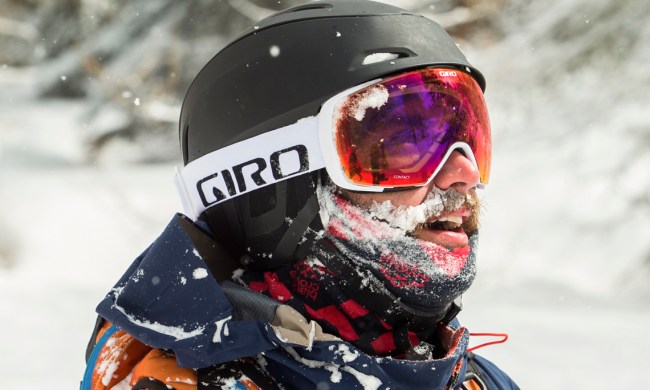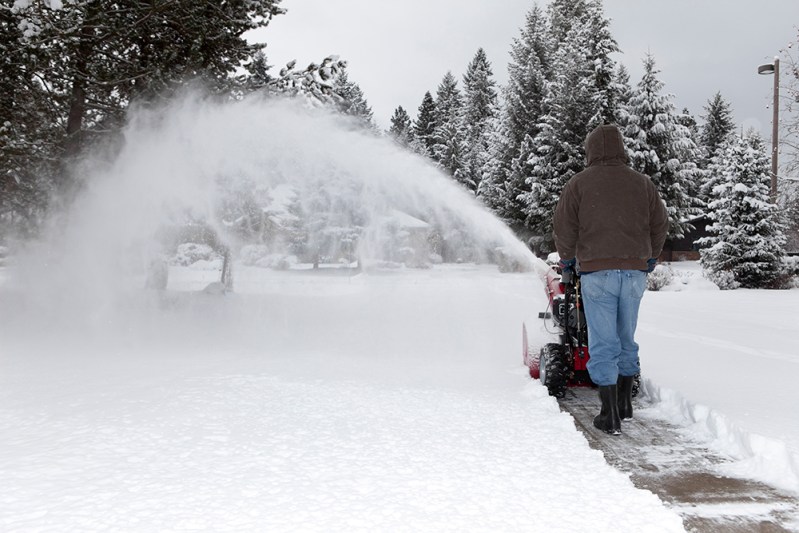
There are few things more magical than waking up to newly fallen snow on a cold winter’s morning. But all that enchanting snow loses its appeal when it comes to actually dealing with it; namely, shoveling snow off your driveway, sidewalks, and steps so you can safely drive in snow and get into and out of your own house. If you grew up in an area where it snowed frequently, you likely had to help shovel each time it snowed. But now, as adults, there are some easier options you can utilize that don’t take as long and aren’t as physically taxing. Luckily, snow removal isn’t as exhausting as before since there are already available snow blowers in the market that will save you both time and energy (and make you the envy of your shoveling neighbors). However, there are many different factors to consider in choosing a snow blower: how much snow does your area usually get? Do you need to clear a large or small amount of snow? What about gas-powered versus electric models? Taking all these factors into consideration, these are the four best snow blowers to buy for future winters.
Related Guides
Ego 2-Stage Snow Blower
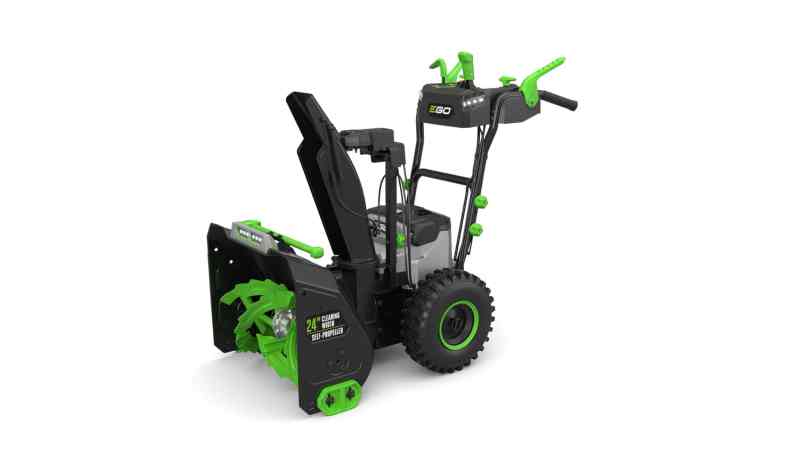
Compactly designed with a stylish black and neon-green color scheme, the two-stage Ego snow blower is one of the best electric snow blowers available. And not just because it’s quiet and hassle-free, but also because it’s cordless, so there’s no need to be dragging a cold-weather extension cord around the yard. Measuring 24 inches, the steel auger can funnel in huge amounts of snow, breaking up heavier bits and then ejecting the snow out of the chute to a distance of 50 feet. A dashboard allows you to change the auger speed, and a pair of ARC Lithium batteries bring long-lasting power. Other handy features include LED lights for late-night or early morning snow removal.
John Deere X300 Snow Blower
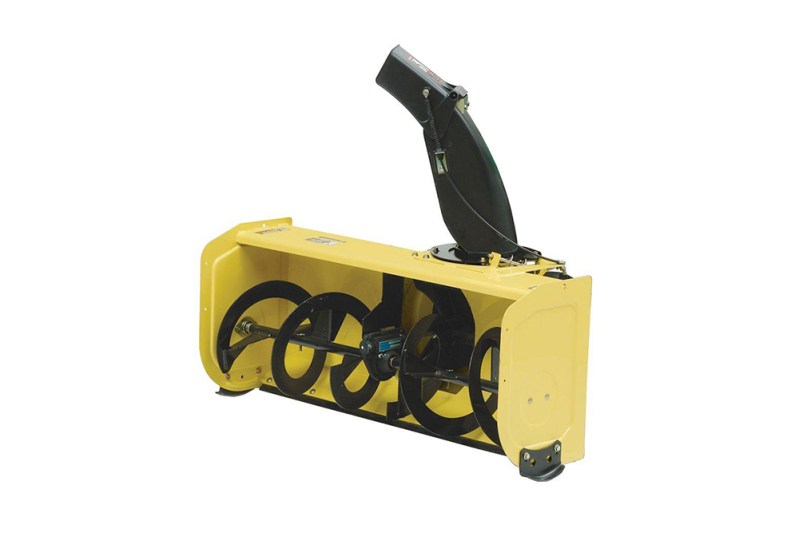
Designed to attach to the front of select John Deere tractors, this 44-inch, two-stage snowblower really packs a wallop thanks to the added power from the tractor. Even though it’s a two-stage, it can handle the type of heavy, wet, and deep snow that’s usually best suited for three-stage blowers, and it’s designed to work on gravel and unpaved surfaces. With its powerful blower that pumps out huge volumes of snow at a consistent, high velocity, you can clear large tracts of land quickly and efficiently, making this model especially ideal for people who live on larger estates or out in the country.
Toro SnowMaster 724 ZXR
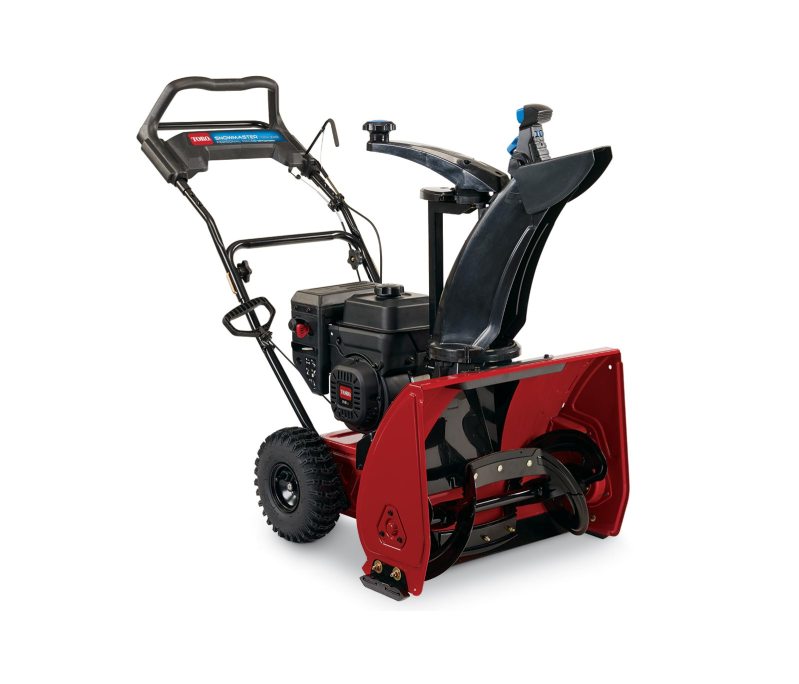
Toro’s single-stage models are routinely considered among the best in class for single-stage snow blowers, and the SnowMaster 724 ZXR is no exception. With a simple, self-propelled design that allows you to control the speed and smoothly angle around your yard to achieve maximum snow removal, this model is ideal for suburban or neighborhood environments. Carving a 32-inch path, Toro’s signature 212cc OHV 4-cycle engine propels the snow out the chute at a distance of up to 40 feet.
Cub Cadet 3X Three-Stage
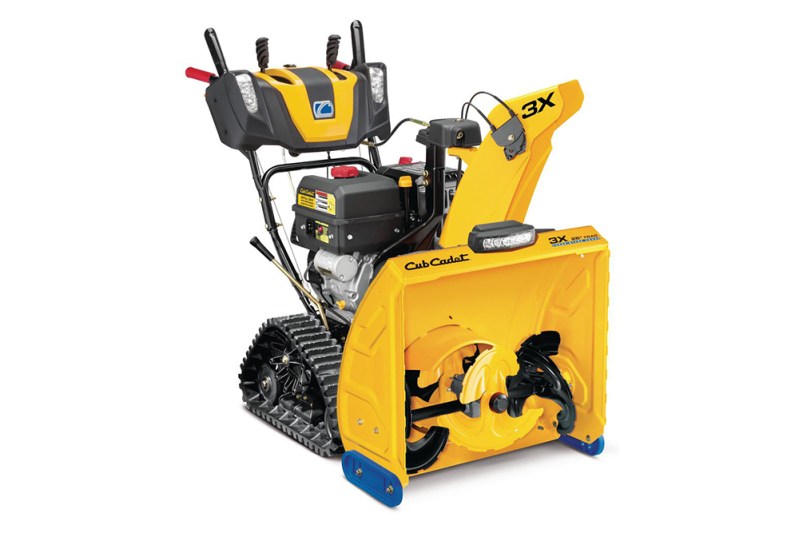
If you live in an area that gets regularly pummeled with heavy winter storms, you need to break out the big guns. Hailed as one of the best three-stage snow blowers money can buy, the Cub Cadet 3X can clear a 26-inch-wide path through up to 23 inches of snow thanks to its massive auger, which gobbles up snow, breaks down frozen chunks and ice, then spits them out through an adjustable steel chute that can be swiveled to different directions or pitch heights. With tons of other great features like lights, power steering that helps you retain control even on slippery inclines, and an easy electric start, you’ll be done clearing that wall of snow in no time.
What To Look for in a Snow Blower
When choosing the best snow blower for your needs, it’s essential to keep these questions in mind: How much snow does your area usually get, and how high does it accumulate? What type of snow is most common; is it wet and light, wet and heavy, or some other combination? What surface will you be working on the most: ground, pavement, or gravel? Is the area flat or are there inclines and indentations? How far do you want the snow to be blown? And, finally, how big of a path do you want your snow blower to clear?
You want a snow blower that will fulfill the specific needs of your area as well as your personal preferences. For example, if you want to clear wider paths so you don’t have to do as many back-and-forth rows, a two- or three-stage snow blower will get the job done more quickly than an electric or single-stage model. If you live out in the countryside, you’d want a stronger model with more power that can handle dirt, gravel, and varied landscapes. However, if you live in a suburban area where the ground is pretty flat, a simple single-stage or electric snow blower should be sufficient.
Overall, the most important thing to keep in mind is that using a snow blower should make your life easier, especially on your body. Long hours shoveling heavy snow can really do a number on your back, so a snow blower should save you a ton of physical discomfort and pain, not to mention time and energy.
Below, we’ll go more in-depth about the specifics of different kinds of snow blowers.
Motor Type
One of the biggest differences between various snow blowers will be what kind of motor it has, which influences its power and usability. At its most basic, snow blowers are divided into electric or gas-powered models. Electric snow blowers require less maintenance, take up less space, are handy for snow blowing in smaller areas, and in general, are easier to handle as you don’t need to refill any oil or gas tanks. While in the past electric snow blowers were generally overlooked due to their low power and the need to keep them plugged in, nowadays more powerful and advanced models of electric and battery-powered options are becoming some of the best choices out there. For gas-powered motors, there are three different options: single-stage, two-stage, and three-stage. As the name implies, each model’s method of channeling and throwing snow has either one, two, or three steps. Single-stage have a single auger, which scoots along the ground scooping up snow and channeling it to the chute. Two-stage adds an impeller to the mix, which churns up the snow before sending it out the discharge chute. The three-stage takes it even further by adding an accelerator to the mix, which first breaks down heavy snow and ice before sending it through the impeller and then out the chute. For the biggest jobs, there’s also track drive, which uses tracks instead of wheels for increased mobility and traction.
Clearing Width
The exact clearing path of each snow blower can vary slightly from model to model, but in general, single-stage models clear paths about 18-22 inches wide. Two-stage can do wider swathes of 20-38 inches, and three-stage or track-drive bulldoze through those drifts to clear paths 24-32 inches wide. Electric models generally only clear about 12-18 inches.
Surface
Different kinds of snow blowers will work best on different kinds of surfaces. For paved areas like driveways, sidewalks, and roads, a standard electric or single-stage model will be enough to do the trick. But if you’re going to be tackling areas with gravel or dirt, you’ll want a two- or three-stage option, so that the auger won’t be scooting directly along the ground and picking up debris. Two- and three-stage models are also handy because they can work on both paved and unpaved surfaces.
Incline
Just as you would need to consider inclines or rises and falls in the landscape for lawnmowers, the same holds true for snow blowers. If your property is hilly or has lots of inclines, you’ll want to go for a higher-powered snow blower like a two- or three-stage. Partially this is so that you’ll have more power to go up and down hills while still clearing the snow in a uniform fashion, but also because, as the inclines and indentations can cause the bottom of your snow blower to come into contact with the ground, you want a snow blower with a slightly-elevated auger so that it doesn’t pick up rocks and other debris along with the snow. Not only could this potentially injure someone as the debris is ejected, but it could also damage the machine.

